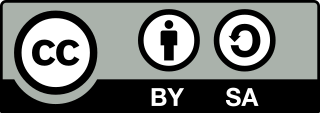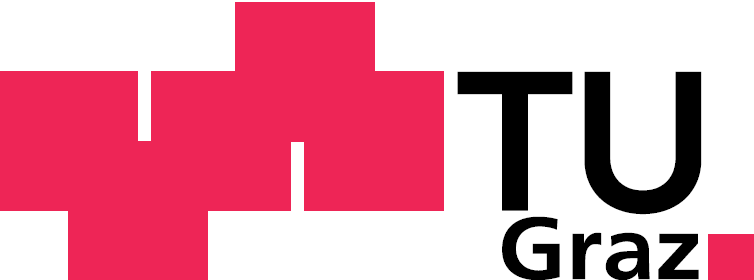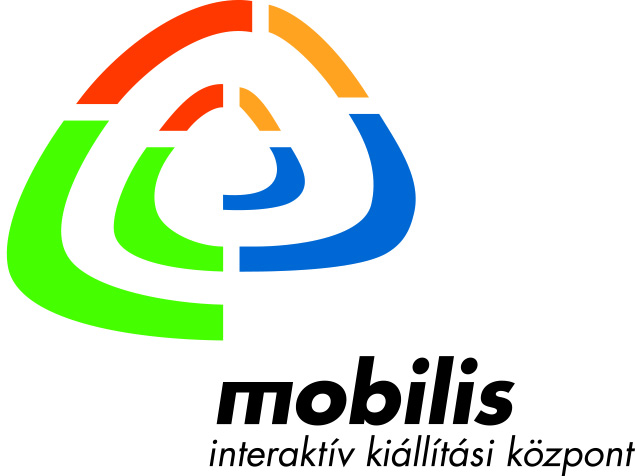Module 8
Art and Artificial Intelligence
"If humans provide the algorithm, but the AI creates the image: Who is the artist then?"

About the Module
In this module, for example, the question should be dealt with, whether AI in art becomes an artist itself or whether it is just another technical tool . There will also be a discussion about where "art" actually starts and how the concept of art may have to be reconsidered due to new technologies.
Objectives
The students are able to
- define the term "art" for themselves
- describe and apply different AI applications
- critically question the concept of art in connection with artificial intelligence
- describe different forms of artificial intelligence in the field of art
- discuss the potential of AI applications
Zeitplan
| Time | Content | Material |
|---|---|---|
| 5 min | Confrontation - What is art? | Slideset 1 |
| 15 - 30 min | Exercise: Defintion of Art | Slideset 1 |
| 20 min | Theory - AI and Art | Slideset 1 |
| 50 min | Exercise: Test Lab: Art-Apps | Slideset 2, Test Lab Art-Apps |
Introduction
One of the questions that will be addressed in this module is whether AI in art becomes an artist itself or whether it is just another technical tool. There will also be a discussion about where the concept of "art" actually starts and how the concept of art might have to be reconsidered due to new technologies.
At the beginning of the thematic block, pictures, pieces of music, etc. are shown. After discussing how these art works affect the students and whether it is art at all it is resolved that these works were actually created by AIs.
The teacher then provides input on how these works can be created by AIs and what influence AI-generated art is already having (cf. “Edmond de Belamy”, completion of Beethoven's unfinished 10th symphony, machine-written Harry Potter chapter).
Guided by this input, the students should discuss these questions in small groups: what is art, who is the actual artist of these works? Can AI replace the creativity of humans or humans as artists? What is the potential of these new applications?
At the end of the module, the students should become researcher and artists by themselves and try out and evaluate some AI applications that can be accessed on the Internet and reflect on their place in the art world. The created works and reflections can then be presented and discussed in the plenum afterwards.
Who's the artist? - The Fear of being replaced
For many people, artists are still central to the creative process. Artists who work with AI do not create the artwork themselves, but they develop the software that creates the work in return.
Some artists see AI systems as a tool they work with, others see these systems more humanized, i.e. more as a colleague with whom they create their works. Artificial intelligence is referred to as a partner and as a muse, that comes to the rescue in a creative crises.
The musician Holly Herndon, for example, describes her AI "Spawn", which she developed for her album "Proto", as a baby that she supervises like a parent. This AI takes different speech samples and then calculates which sample could follow the previous one. For example, Holly's song "Birth" consists only of her own speech samples, while "Frontier" consists of samples from an entire ensemble. In interviews, she also emphasizes that artists should use AIs responsibly and pay attention to which data is used.
So far, the concern that AIs could replace artists has hardly been felt in the field of digital art. Neither does the possibility of creating a particularly realistic image through technology constitute art, nor is a machine (so far) able to create something so emotional like people who have been shaped and experienced throughout their lives would create art. /p>
Creativity as the last bastion of humanity?
US artist and programmer Robbie Barrat—a wonder child who was just 22— sold a 2018 digital work at Sotheby's entitled “Nude Portrait#7Frame#64 “ in March 2022 for £630,000 (€753,700).
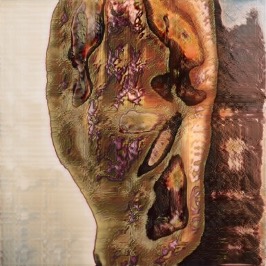
The AI-made painting "Edmond de Belamy" was sold by auction house Christie's in 2018 for a whopping $432,500 (€426,800) instead of the expected $10,000. This AI was trained the French artist collective Obvious. 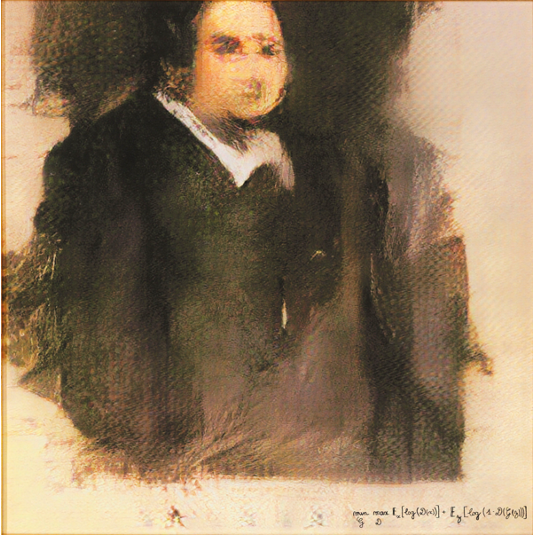 These oddly washed out and abstract images are considered some of the most successful AI artworks in the world. "In the art world, the use of AI has created a new movement that is redefining creativity and authorship," reports Spiegel Online at the end of 2020. This movement shakes up the idea "that creative design is a unique selling point of humans.
These oddly washed out and abstract images are considered some of the most successful AI artworks in the world. "In the art world, the use of AI has created a new movement that is redefining creativity and authorship," reports Spiegel Online at the end of 2020. This movement shakes up the idea "that creative design is a unique selling point of humans.
However, AI art does not only exist in the visual arts. In recent years, different softwares has been created, fed with the pieces by Beethoven and Schubert, that actually managed to complete Beethoven's unfinished 10th symphony and Schubert's unfinished 8th symphony. Other companies offer e.g. AI-generated music for films, advertising and video games. The Botnik company published a machine-written Harry Potter chapter. Other programs such as Eloquentron3000 write German love and protest poems or OpenAI writes English short stories.
Computer generated art, however, is not something that has only been around for a few years. Artists from Germany and the USA were already creating works using algorithms in the 1960s. The artist Georg Nees, for example, used a randomized number generator to create geometric figures, which combined to form entire paintings.

However, today's programs are much more complex than 50 years ago, which opens up completely new possibilities.
How do many (not all, of course) of these applications work?
So-called GANs ("Generative Adversarial Networks") are trained for these artificially produced images, for example to create an image from text input or to transform a photo into a painting. This type of program consists of two competing systems, the so-called "generator"and the "discriminator". The generator has the task of generating new data. The discriminator then tries to distinguish the data generated by the generator from the training data and tries to recognize if it's artificially generated. Through this constant interaction, in which the generator keeps trying to trick the discriminator, the system learns independentlyand thus develops ever more realistic images. By feeding in many well-known impressionist paintings, for example, your own holiday photos can be transformed into an impressionist painting with the help of a GAN. However, GANs are also able to create deep fakes (cf. Module 9), which can be misused in the media for false reports.
So-called transformers are a form of neural networks and enable great progress in the field of language AIs such as Google's BERT or OpenAI's GPT-3 in terms of translations, speech recognition and text generation. Here, individual pixels or syllables are linked to the others in order to be able to contribute to the understanding of the overall data. For example, the system may learn to associate the word "eat" with "food" or "breakfast," or recognize certain repetitive motifs in pieces of music or images that it can reapply then.
These AI algorithms have evolved rapidly over the past few years and are now practicing on an incredible amount of data sets. In 2020, for example, the company OpenAi released the GPT-3 algorithm. This one is able to generate text that looks like it was written by a human. Among other things, the text-to-image application DALL:E is also based on GPT-3, which will also be mentioned later in the applications for station operation.
Why are these programs developed?
GANs can be used, for example, to animate static photographs of people or objects. You can use them to color black and white movies or images, create deepfakes or create completely new film sequences.
With the help of these applications, images can be generated that no one has done before with just a few clicks. At the same time, in the future, when algorithms continue to develop and these works become even more precise, they could also replace human work. However, by using the applications in class and by using the example images, the students should also recognize that this will not be the case any time soon.
Who is the artist then?
In the case of the work "Edmond de Belamie", the media often referred to it as one of the first works of art, "which was not created by a human being, but independently by a machine." However, the earned money did not go to the AI, but to the artist collective Obvious, which trained the AI. But also, the programming team that developed the AI in the first place was not mentioned at all and was not given a share of the proceeds.
In the development of artificial intelligence, countless people are involved: also in the case of creating art with the help of AI programs. Artists and curators as well as programmers and sometimes recipients work together here to create these extraordinary works.
However, the extent to which Artificial Intelligence can be regarded as the author of the art works depends on different positions that can be taken on this. A study by the Max Planck Institute found, for example, that those people who tend to humanize artificial intelligence do not see it as a mere tool, but that these AIs are also entitled to credit for creating these works, but at the same time that AIs, for example, should be more responsible for copyright infringements.
How human an AI is perceived depends primarily on the language and presentation used. There is a difference between saying that an AI using artistic assistance creates new works and that artists using an AI create works of art by typing in commands beforehand.
Another question that arises from the generation of artworks by artificial intelligence is determining authorship. Should it ever be possible for a program to own the sole copyright for its self-created works? Or should the copyright remain with the programmers, artists or clients, who paid for the program? So far, no labeling of AI-Produced Art is planned in connection with this, although proof of provenance is also required for sales of traditionally produced, classic works. However, many specialists are also against labelling, after all, with large installations such as Jeff Koons', one does not know how much the artist did himself and how much his team was responsible for.
Botto AI art machine
Botto is a decentralized autonomous organization and AI application that creates art based on community feedback. Each week, Botto presents 350 artworks to the community, who can then vote for their favorite artworks. Botto uses these voices to train his algorithm and change the art he creates over time. Each week, the selected artwork will be auctioned off at an NFT and on SuperRare. Botto then creates a new series of artworks and the process begins again. With community feedback, the AI can better respond to the needs of the voters with each new round of voting.
References
Material
References
Is that even art? What is the main idea of art?
The concept of art is subjective and can be defined individually in different ways and depending on scientific and historical points of view.
In order to deal with the concept of art, two possible exercises are presented here.
- The pupils create together a mind map with post-its or digitally with miro.com in small groups or in a plenary session, in which they create associations with the term "art". Then the students discuss the associations to form a common definition.
- Several definitions of "art" are hanging up in the classroom. The students read them through and position themselves in the room near the definitions that appeals to them most. In the following, these definitions are explained by the students themselves who are standing next to them, they explain why they chose this definition, but also what might need to be added/changed from their perspective.
Possible art definitions that one could use would be:
- If a work of art says something to those who look at a picture, listen to a piece of music or read a book, then it is art, regardless of how it was created.
- Art is "creative design from a wide variety of materials or with the means of language, sounds in confrontation with nature and the world."
- Art is every creative work of a human being.
- For us, art is a form of creative expression that enriches the human experience by triggering emotions, asking questions and pushing boundaries.
- Art is something that artists produce. An artist should achieve something extraordinary. She or he must master the technique, e.g. must know how to use a brush and paint, or how to tell a story in such a way that it is exciting.
- Art is not always "beautiful", it can evoke, provoke and criticize a wide variety of emotions.
In a further step, after dealing with the concept of art, the students should discuss the following questions about AI-generated art (in small groups or in a plenary session):
- Who is the artist - the machine, the programmer or the person whose data you fed the algorithm?
- Can AI replace human creativity or human creativity?
- What is the potential of these new applications?
Can AI do art?
Whether what an AI creates can actually be considered as art is debatable. Depending on the definition of art, any answer is possible. On the one hand, art can be viewed as something human-made, on the other hand, art can also be viewed from the audience's point of view, and so something is art as soon as it touches us in a certain way (regardless of who the author is).
If you look at "art" from the second point of view described here, it is therefore quite possible that an algorithm can also be creative like a human being.
Can AI do art?
Whether what an AI creates can actually be considered art is debatable. Depending on the definition of art, any answer is possible. On the one hand, art can be viewed as something man-made, on the other hand, art can also be viewed from the audience's point of view, and so something is art as soon as it touches us in a certain way (regardless of who the author is).
If you look at "art" from the second point of view described here, it is therefore quite possible that an algorithm can also be creative like a human being.
Many secondary grade students have already encountered GANs and Transformers in some way. Most young people use social media apps such as Instagram, TikTok or Snapchat and also experiment with the implemented filters there. So it would also be possible to take a closer look at the filters and applications within these apps, to see how exactly they work, what function they have and what problems could arise with them (cf. discrimination by not recognizing darker skin color due to one-sided data feed ).
In the following exercise, the students should now independently try out these tools for creating art and fill out a questionaire. In the following, some applications are presented, due to different artistic approaches and degrees of complexity, it should enable for the students to make an appropriate choice.
The diversity of the programs is intended to show the students what has been possible so far, but also where the limits of these applications lie. The students should choose tools themselves, try them out, save creative outcomes/take screenshots and present them to their classmates at the end of the unit. In doing so, the previously discussed questions can be addressed again: Can these applications replace human artists? Is it art at all or can the resulting works be used as inspiration for other works?
Material
Possible programs to test
- Magic Sketchpad
- This application completes drawings automatically, with the results appearing relatively imprecise, sketchy.
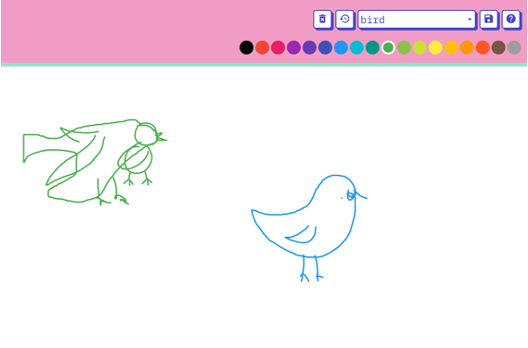
- Autodraw
- This application tries to recognize what is being drawn and suggests ready-made images in the header that can be inserted.

- AI Duet
- This application plays piano together with the user by reacting to sequences of notes. The sound is entered via the keyboard.

- Wombo Dream
- This application turns short text passages into a painting in different styles.
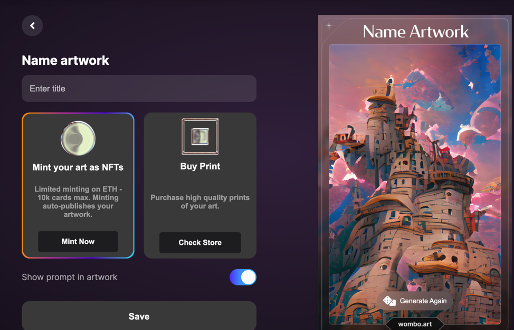
- DALL-E Mini
- This application converts short texts into nine images. Dall-E has been shared frequently on social media platforms, especially in recent months.
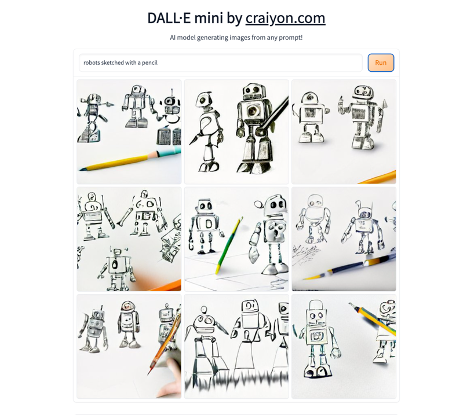
- Arbitrary Style Transfer
- This application is a typical example of GANs. She takes the style of one image and transfers it to another. On the one hand, images that have already been uploaded can be used or you can upload your own images.
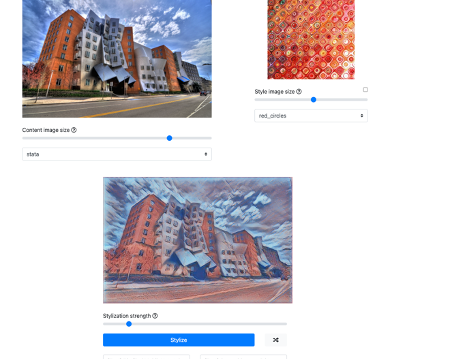
- Horror Story Maker (via Open AI)
- This example application from OpenAi writes short horror stories. You only have to specify a topic/keyword and the artificial intelligence will write a horror story consisting of two sentences. However, OpenAI requires a login (here it is worth trying other examples as well).

- Gaugan 2
- This application turns drawings into realistic nature pictures. There is the possibility to upload pictures or to create pictures independently with the brush tool.
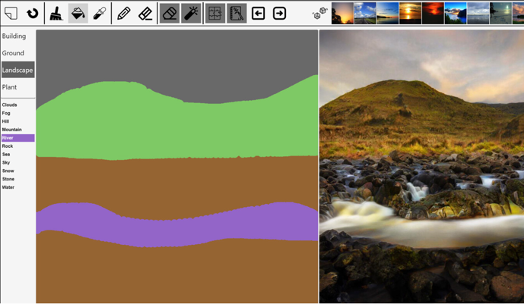
- Art Breeder
- Art Breeder is one of the most famous GANs. In this application one can combine the content and style of multiple images. There are a large number of images to choose from and combine on the website, whereby both the content and the style of the image can be influenced. Registration is also required here!

- The following websites are also suitable
-
- Magenta - A variety of creative applications based on machine learning. These are mainly applications that work with sound.
- Eloquentron3000 - A German-language poetry-writing bot
- OpenAi - Using OpenAI and GPT-3, a variety of language-based projects are possible. However, there is already a large selection of examples that you can try.
- Create Your Own Manga Character - This application from Google's Arts and Culture supports artists in drawing manga characters by adding lines and adding colors.



